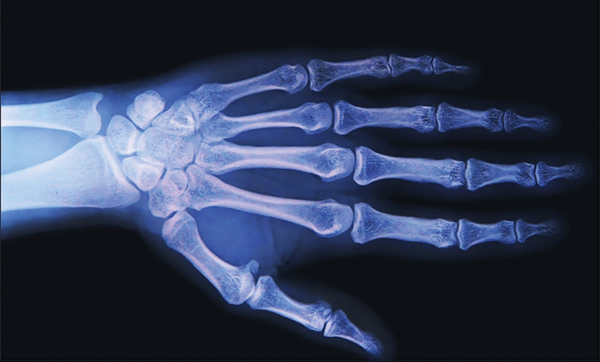From the February 2014 issue of Pediatric Emergency Medicine Practice, “PEMP – Emergency Department Management of Acute Hematogenous Osteomyelitis in Children.” Reprinted with permission. To access your EMRA member benefit of free online access to all EM Practice, Pediatric EM Practice, and EM Practice Guidelines Update issues, go to www.ebmedicine.net/emra, call 1-800-249-5770, or send e-mail to ebm@ebmedicine.net.
- “The X-ray was normal, so I did not pursue a diagnosis of osteomyelitis.”
X-rays are often normal in AHO, and non-specific changes are seen in only 15% to 58% of patients with AHO. X-rays have even less sensitivity in pelvic osteomyelitis. It typically takes ≥7 days for changes associated with osteomyelitis to be seen on X-ray. - “The WBC count and differential were unremarkable, so it couldn't have been osteomyelitis.”
WBC count is the least helpful of the inflammatory markers, with a sensitivity of 34% to 43% in AHO. ESR and CRP are most useful and are elevated in 73% to 100% and 70% to 100% of patients, respectively. - “I treated a six-month-old who had no MRSA risk factors with nafcillin and heard that his condition worsened the next day.”
Although S. aureus is the most common cause of AHO, there are certain populations where gram-negative bacilli coverage is also indicated or should be considered. This includes children aged <5 years, children who have not completed the Hib vaccine series, and children with sickle-cell disease. - “A young boy with abdominal pain, who had a negative CT scan three days ago, was discharged and then returned to the ED and was diagnosed with pelvic osteomyelitis.”
Pelvic osteomyelitis may present as hip, thigh, or abdominal pain, which frequently leads to delayed diagnosis and misdiagnosis. Keep pelvic osteomyelitis on your differential for any patient presenting with abdominal pain, as a misdiagnosis of pelvic osteomyelitis has been shown to cause significant permanent disability. - “An adolescent patient who had a renal transplant one year ago presented with pain over her femur. Her blood work was completely normal, so I discharged her. When she came back to the ED, I found I had missed osteomyelitis.”
Immunosuppressed patients are at risk for less common etiologies of osteomyelitis, such as fungal osteomyelitis. It is important to remember that markers of systemic inflammation are often normal in fungal osteomyelitis. - “I suspected osteomyelitis, but the CRP was normal, so I decided AHO was ruled out.”
No marker of inflammation, including CRP, is 100% sensitive for AHO. Clinical suspicion should prompt further testing even if all blood work is normal. - “A patient presented with findings of cellulitis. I did not do any blood work and treated with cephalexin. The symptoms returned after the antibiotic course was finished and an MRI showed osteomyelitis.”
Osteomyelitis can present with an overlying cellulitis with or without an abscess. These conditions can often be difficult to differentiate from one another. If there is any suspicion for deeper infection of the muscle or bone, emergency clinicians should get an initial plain radiograph and send a blood sample for measurement of CRP, ESR, and a WBC count with differential. Also consider obtaining CPK levels to rule out muscle involvement. - “A pediatric patient had a history of trauma at the site of leg pain, but the X-ray was negative. I sent him home with recommendations for ice, rest, and anti-inflammatory medicines. He returned later with worsening symptoms and was diagnosed with osteomyelitis.”
A significant proportion of children with AHO have a history of trauma at the site of infection. Trauma to bone tissue may predispose it to hematogenous infection. A history of trauma should not deter emergency clinicians from further workup for osteomyelitis. - “My facility does not have MRI capability, so I referred a child with suspected osteomyelitis to a larger academic center.”
Bone scan, ultrasound, or CT can aid in workup for osteomyelitis when MRI is not available. In most cases, clinical suspicion and a positive bone scan is sufficient evidence to support obtaining a bone sample for culture and to effectively treat AHO. - “I diagnosed osteomyelitis, recovered a microbe in blood and bone culture, and treated it with an effective antibiotic for six weeks. The patient returned several weeks after completion with recurrence at the same site.”
Treatment failure is common in osteomyelitis, occurring in 4.7% of children in one study. Even in the absence of sequestra or abscess, appropriate treatment can fail for reasons that are poorly understood.



